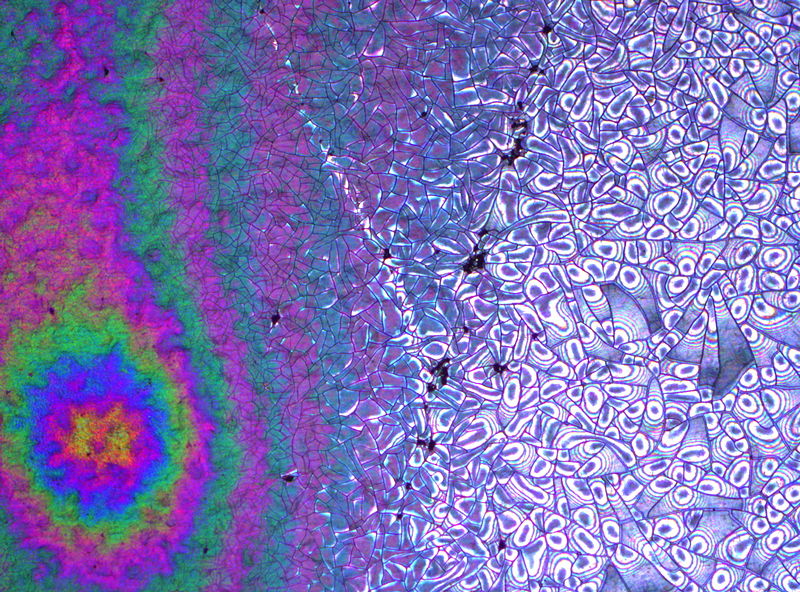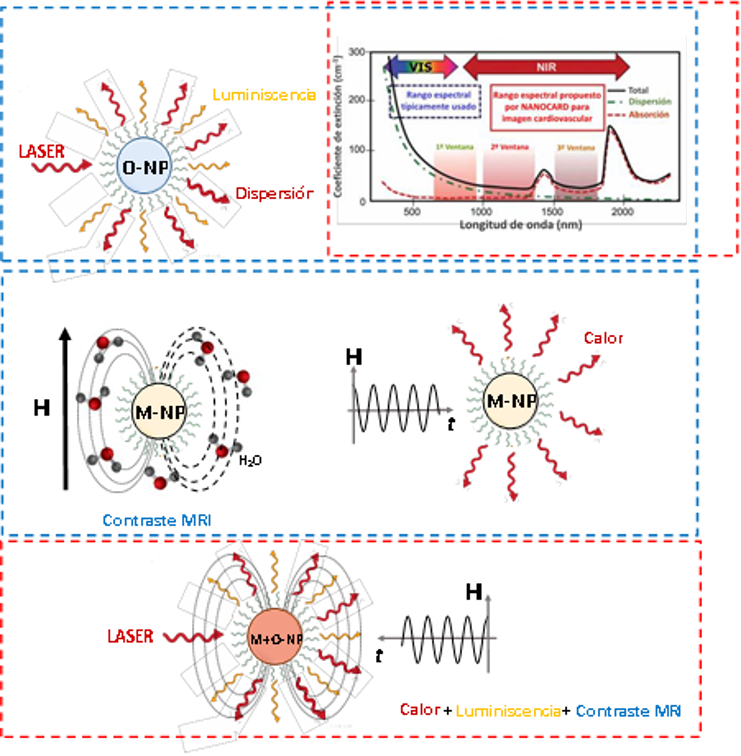Nanoparticles to fight against cardiovascular disease

Scientists from Pompeu Fabra University, the Autonomous University of Madrid (UAM) and the IMDEA Nanoscience Institute are launching NANOCARD, a multidisciplinary project that focuses on developing nanoparticles for the diagnosis of cardiovascular lesions.
Nanotechnology uses innovative techniques for making nanoscopic particles of a size less than 100 nanometres (10 -7 metres). Compared to a pinhead, which measures about 1 millimetre (10 -3 metres), or a strand of hair, measuring 0.1 millimeters (10 -4 meters), these nanoparticles are several orders of magnitude smaller. Their size gives them different physical properties than the same particle on a larger scale. For example, gold nanoparticles disperse incident light producing a very different red colour from the typical yellow gold of macroscopic gold we use to make jewellery. There are several types of nanoparticles with different compositions, sizes and shapes that have great potential in fields such as biomedicine, optics or electronics. This is why nanotechnology is experiencing intense growth in research nowadays. The team led by Pilar Rivera Gil, researcher at the DCEXS, is determined to take advantage of the singularity of luminescent, magnetic and hybrid (optomagnetic) nanoparticles to fight against cardiovascular injuries.
According to World Health Organization (WHO) data, cardiovascular diseases are the leading cause of death worldwide. Every year more people die from cardiovascular disease than from any other cause. "It requires a great scientific-technological effort to develop techniques that allow a non-invasive diagnosis of the damage caused by cardiovascular diseases", says Rivera Gil, principal investigator of the project and leader of the Integrative Biomedical Materials and Nanomedicine research group at the DCEXS. And she adds, "These techniques will allow an effective evaluation of the type of injury and its response to the different treatments used."

"With NANOCARD we will manufacture biocompatible nanomaterials to improve in vivo imaging strategies and develop a pioneering system for the rapid detection of molecular markers in blood samples". NANOCARD will use nanoparticles to detect cardiovascular system lesions through their monitoring, selective accumulation and by obtaining images of ischemic tissue (tissue resulting, for example, as a consequence of heart disease) and through the detection of molecular markers associated with cardiovascular damage in blood plasma. Following several strategies such as the use of optically active nanoparticles or magnetic nanoparticles that can act as contrast agents, NANOCARD aims to offer more efficient and sensitive alternatives than the techniques used today in the diagnosis of cardiovascular disease. "One of the tools we want to develop is hybrid, multimodal, semiconductor and magnetic nanoparticles capable of being detected in vivo with two different techniques, fluorescence and magnetic resonance, to improve image resolution and penetrability in the morphological diagnosis of lesions. Other nanoparticles will be designed to detect specific molecular markers associated with blood damage by transduction of the optical or magnetic signal", says Rivera Gil. The different types of nanoparticles will be subjected to complete biophysical and chemical characterization and to toxicity and biocompatibility tests, as well as to a study that tests their suitability as diagnostic agents.
The participating institutions form a heterogeneous working group that includes physicists, biologists, chemists, pharmacists, veterinarians and physicians. In addition, NANOCARD also has the support of renowned research centres, companies and hospitals such as the Cardiology Unit of La Princesa University Hospital or the Center for Cooperative Research in Biomaterials (CIC biomaGUNE). The financing of the project, a total of 300,000 euros, is in from the Ministry of Industry, Competitiveness and Economy (MINEICO), and is expected to last three years.
